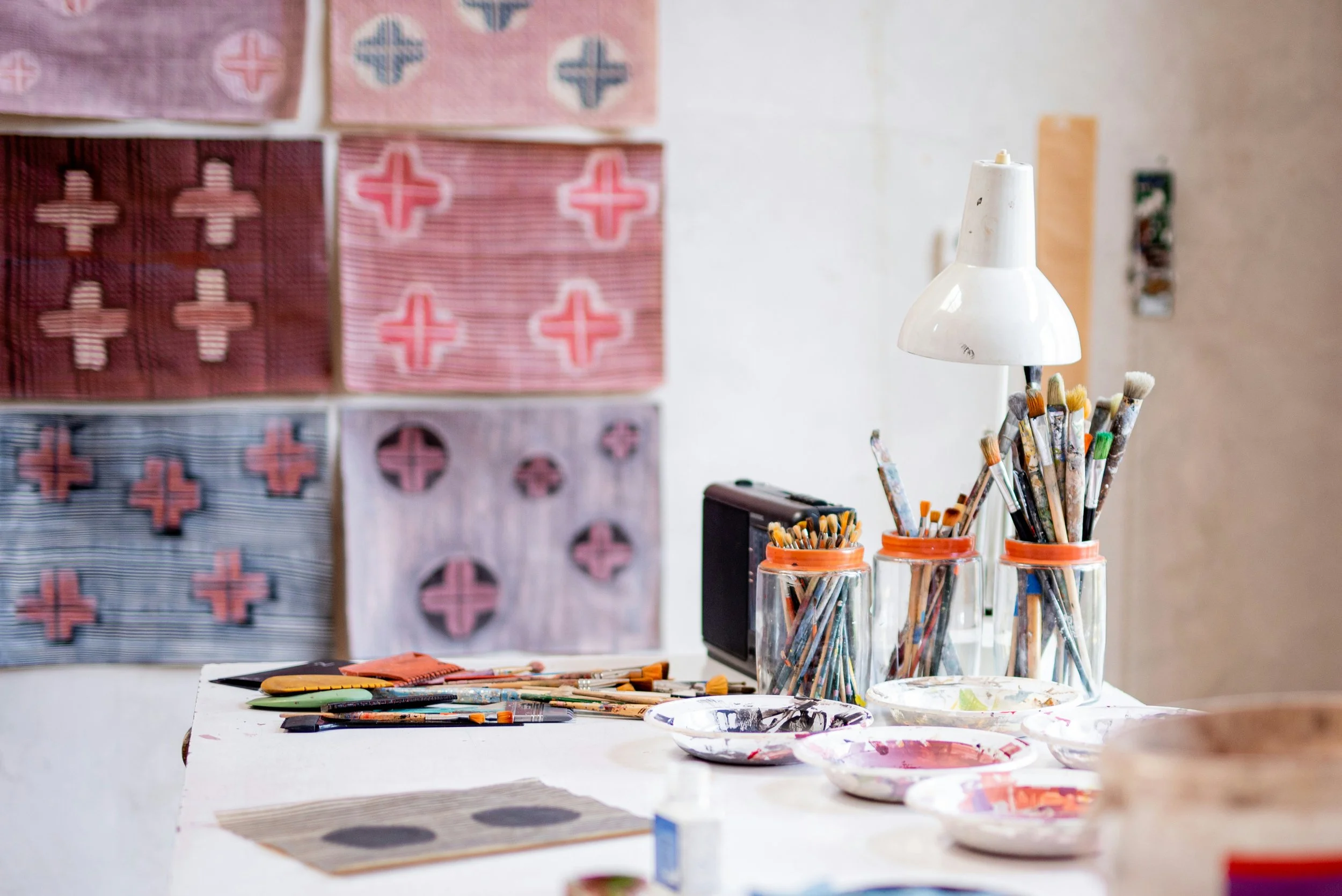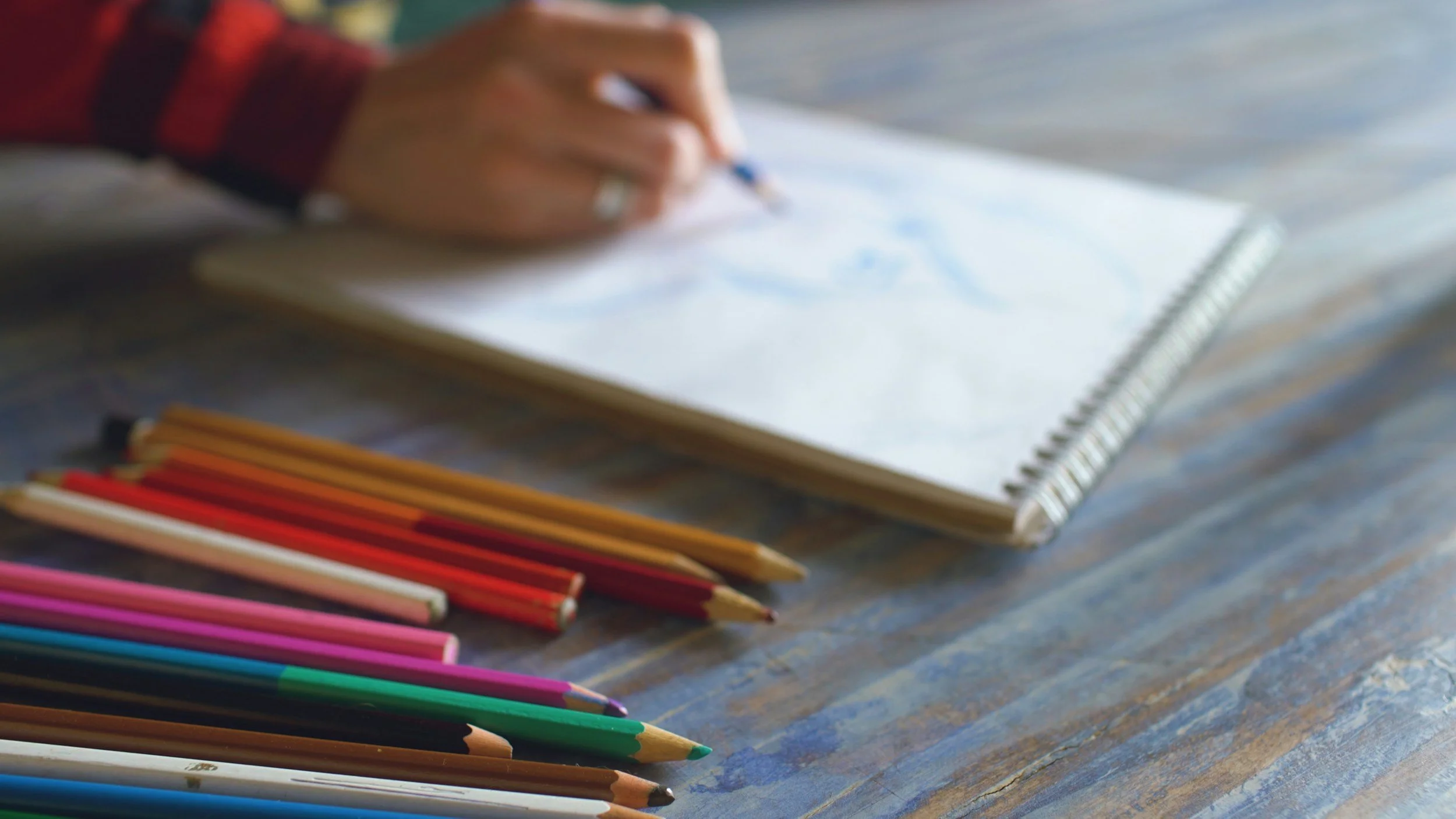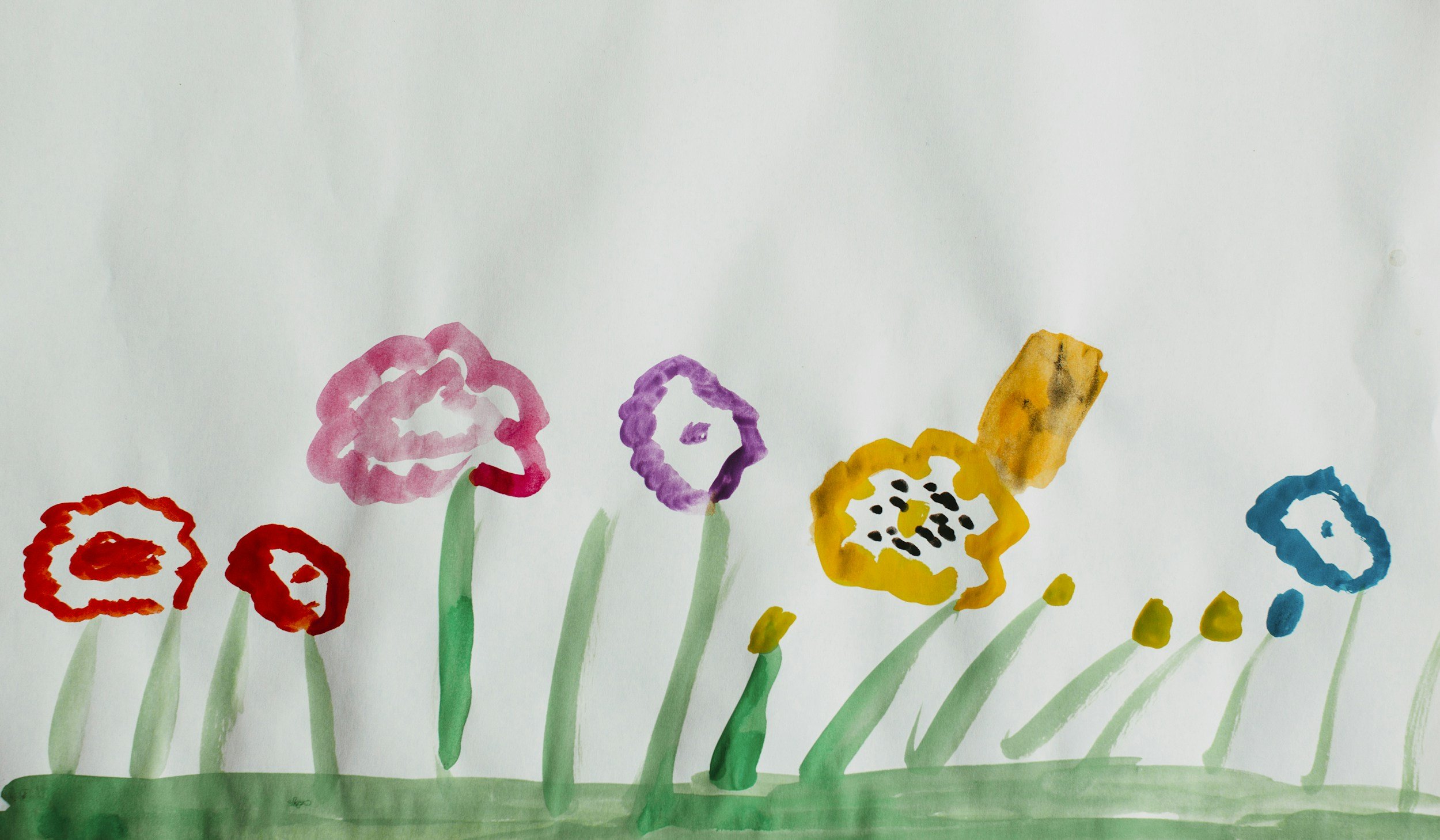What to Expect in Art Therapy: Portland, OR Art Therapist Shares Her Perspective
In art therapy graduate school, I finally stopped panicking at a blank page. When my therapist invited me to make something about my mom’s recent death, I reached for a red pastel and drew a chain of circles, then added soft clouds beside them. The right side of the page stayed empty until I said, “There’s nothing there.” That moment of recognition led me to fill the space with a solid black box. This wasn’t art to hang on my wall, it was a way of seeing what I was feeling. My therapist guided me to explore the colors, shapes, textures, and symbols I used. This gave me deep insights into my grief and how it was reshaping me. “This is magic,” I thought. Every time, I’m in awe of the power of art therapy to quickly connect me to my inner knowing.
“Art is the meeting ground of the world inside and the world outside.” — Elinor Ulman
Engaging the Body
While making that piece, there were moments where I was deliberate in my marks, and moments where I was scribbling hard and fast. My body was as engaged as my mind. While I was gaining insight, something deeper was happening too.
“Sometimes the hands know how to solve a mystery that the mind has wrestled with in vain.” — Carl Jung
We know emotions live in both body and mind. That’s why we can literally feel heartbroken, or get a pit in our stomach when something feels wrong. Making art brings the body into the healing process. The body and mind work together to move the materials, and that movement often carries its own wisdom. Guided art making can help you explore emotions that don’t yet have words.
An art therapist can also help you safely externalize fear, stress, or trauma through art while staying emotionally regulated. Art helps you stay with feelings long enough to understand and transform them. It gives space for difficult memories or fears to unfold slowly and safely. Trained art therapists use a variety of techniques to help hold that space and keep the process grounded.
There’s No One Way
My own art therapist has a different approach than I do, and I find that fascinating. Art therapy doesn’t stick to one theory or method. Like art itself, it’s full of different styles, tools, and ways of helping people.
Because of this, there’s no single “right” way to do art therapy. That variety is a strength. The field keeps growing creatively and adapts to the needs of each person. Some art therapists lean on cognitive-behavioral ideas, others use existential or psychodynamic approaches. I’m most drawn to narrative art therapy, which helps clients explore the stories they’ve inherited from family or culture and reimagine them through art in ways that support healing and self-understanding.
What Kind of Art Will I Make?
“Art is a way of knowing what it is we actually believe.” — Pat B. Allen
When we make art in therapy, the materials matter. The therapist and client choose materials that feel natural and comfortable. Different supplies can hold personal or cultural meaning—clay might bring back childhood memories, while paint might feel freeing or joyful. Honoring these connections helps the process feel safe and meaningful.
Art therapy also makes space for each person’s background, identity, and lived experience. Therapists pay attention to what feels familiar or resonant, using methods that fit your world rather than a one-size-fits-all approach.
Going Beyond Processing
“The goal of art therapy is to get beneath the surface of things, and once there, to use a gentle nudge to brush away the emotional debris of life and make room for more living.” — Bruce L. Moon
Yes, art can help you regulate and process emotions. It’s powerful that way. But art therapy also helps reshape how we relate to others. For people who have felt unseen or invalidated, the creative process offers a chance to build new, healing experiences through connection and imagination. Making art can express what words cannot, while the therapist can offer a safe, regulated presence. Over time, this shared process can lead to deeper self-understanding, new ways of connecting, and a growing sense of compassion for yourself and others.
Art as Science
There’s a science to all this. Creative thinking activates many areas of the brain that handle emotion, movement, focus, imagination, and problem-solving all at once. Three major networks work together during this process: one that helps us focus, one that supports imagination, and one that helps the brain shift smoothly between the two. When we make art, these systems strengthen their connection. This allows us to often show greater mental flexibility, richer visual memory, and more efficient brain activity because art-making literally helps the brain communicate better with itself. I think of this like being able to have more tools to understand and listen to the self.
What If the Art Is Bad?
“The process itself becomes the teacher.” — Shaun McNiff
In art therapy, what matters most isn’t how “good” the art looks, but what it reveals. Art therapists aren’t analyzing your work like a critic. They’re more interested in witnessing the process with you. The image you create becomes a doorway into your inner world. Your gestures, choices, and even your pauses can hold meaning. Together, we explore these threads with curiosity rather than judgment.
“You don’t have to be an artist to do art therapy. It’s not about being an artist, it’s about expressing yourself in a different language.” — Judith A. Rubin
What to Expect
I can’t speak for every art therapist, but here’s how I work. Making art is always optional. Sometimes it feels right, and sometimes it doesn’t. Even saying no to art can teach us something. When you do want to create, I’ll offer a few prompts and materials to choose from, and you’ll decide what direction to take. As you make art, you can talk, reflect quietly, or let me draw alongside you if that feels supportive. Afterward, we’ll explore what feelings, sensations, symbols, or creative choices came up in the process. Often, meaning starts to emerge naturally. And when the session ends, the art remains, a reflection of what mattered in that moment and a reminder of what you want to carry forward.
Art therapy can help you notice what shows up when you give yourself space to create. Each image holds a small truth about where you are and what you’re ready to see next. And that truth helps us understand ourselves, our relationships, and how we move through the world. Together we explore how creating can become less about making something and more about listening to what wants to be seen, felt, or finally released.




